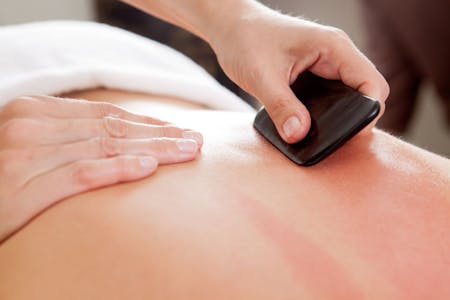Our therapists are trained and experienced in the following techniques to help you recover faster from your pain/injury/surgery.

Manual Therapy
Manual therapy is a skilled hands-on technique that targets soft tissues and joints to improve extensibility, increase range of motion, and reduce pain caused by muscle spasm, muscle tension, and joint dysfunction.
Some treatment options in this category are trigger point release, joint mobilization, neural mobilization, passive stretching, and passive range of motion.
Myofascial Release
Myofascial release is a manual therapy technique that is performed by applying controlled gentle pressure to the fascia (which are located underneath the skin covering muscles, bones, nerves, and organs) to break abnormal tension, relieve pain, and improve motion.
Many people suffering from pain that is not diagnosed via imaging studies have been shown to achieve faster relief with this technique.

IASTM
Most of the time, patients with soft-tissue injuries do not seek physical therapy until the issue has become chronic. Without treatment, the body initiates a self-healing process that leads to scar tissue and adhesion formation, which limits motion and often causes pain. These adhesions prevent the muscle or other tissues from lengthening back to their pre-injury state.
By introducing controlled microtrauma to the affected soft tissue using IASTM, a local inflammatory response is stimulated. This triggers the reabsorption of inappropriate or excessive scar tissue and facilitates a remodeling of the soft-tissue structures. After IASTM treatment, scar tissue can be reorganized so that the cells become aligned in a direction that better promotes movement. Studies have shown the clinical benefits of IASTM, documenting improvements in range of motion, strength, and pain perception following treatment.
Kinesio Taping
This technique facilitates the body’s natural healing process by stimulating different skin receptors. Taping causes the formation of convolutions, which lift the skin and encourage the regeneration of injured tissue by increasing interstitial space and alleviating pressure from swelling after an injury. This decrease in pressure decompresses subcutaneous nociceptors, thereby reducing pain.
